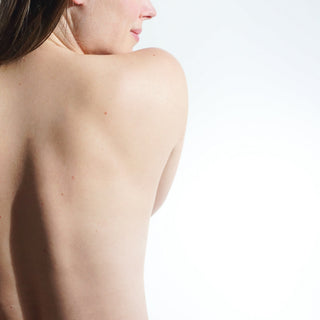Freckles, Moles, and What Your Skin Might Really Be Telling You
For most of us, freckles and moles have always seemed simple.
Freckles mean "sun damage."
Moles mean "something to watch."
But what if that story is incomplete?
According to thinkers in the quantum health space, like Dr. Jack Kruse, freckles and moles aren’t necessarily signs of damage at all. Instead, they may be clues about how your body is processing light, maintaining cellular balance, and expressing health in your skin.
Skin as a Storyteller
Your skin isn’t just a passive shield.
It’s a living, breathing interface between your body and the environment — especially light.
When skin cells are exposed to sunlight, particularly UV rays, they produce melanin, a pigment that helps manage and balance that light. This process is dynamic and intelligent. The goal isn’t simply to block light — it’s to use it wisely while minimizing harm.
Freckles, for example, often appear in response to sun exposure. But instead of being seen as "damage," they may be more accurately viewed as a visible record of how your skin has adapted to manage light.
Moles are slightly different. These are clusters of pigment-producing cells that may form with or without sun exposure. Unlike freckles, which tend to come and go with seasons, moles are often more stable. However, in the broader view, they too are part of how your skin expresses itself in response to environmental and cellular signals.
Both freckles and moles, then, could be understood as part of your skin’s biological story of light, time, and balance — not automatic indicators of danger.
Not a Cause for Fear — But an Invitation to Get Curious
This perspective isn’t about ignoring changes in your skin or throwing caution to the wind.
It’s about shifting out of a fear-based view.
Instead of seeing freckles or moles and thinking:
"This means something is wrong,"
You might ask:
"What is my skin reflecting about how I live, eat, sleep, and interact with the sun?"
In quantum biology, skin is often seen as a mirror of your redox balance — the dynamic flow of electrons, light, and cellular energy. Freckles and moles could simply be markers of how your unique body has handled that dance so far.
Rather than fearing them, you can use them as gentle invitations to reflect:
-
Am I getting enough healthy, appropriate sun exposure?
-
How’s my sleep and circadian rhythm?
-
Am I nourishing my body in a way that supports cellular repair and renewal?
Dr. Jack Kruse has commented on freckles in the context of UV light, melanin, and redox potential, though it's scattered through blogs, comments, and podcasts rather than in one neat explanation.
→ Freckles are a sign of lowered redox potential and poor melanin control.
In Kruse’s view, healthy skin with optimized redox and circadian signaling does not "need" to freckle easily. Freckling is seen as a maladaptive response — a sign that the skin is not processing UV well (poor melanin cycling and free radical handling). It shows up when mitochondrial function and antioxidant systems are weak.
→ Freckles = Poor melanin recycling and possible inflammation.
He talks often about melanin recycling, which is the idea that healthy light exposure patterns + mitochondrial redox allow melanin to act as a photon acceptor and donor properly. When this breaks down (think bad circadian rhythms, bad DHA status, poor mitochondrial function), melanin may become dysregulated. Freckles can be a visual clue of that dysregulation.
→ Not necessarily dangerous, but suboptimal.
Freckles themselves aren’t framed as dangerous or precancerous, but Kruse would say they point to skin that is not ideally adapted to light. In his worldview, optimal skin tans evenly and processes light efficiently — freckling is more of a "stopgap" solution when that isn’t happening.
→ Key factors he links to freckling
-
Lack of deep sunrise and UVA light before strong UVB
-
Poor DHA status (from poor diet or excess indoor time / EMF exposure)
-
High nnEMF environment (lowers redox and impairs melanin handling)
-
Poor skin antioxidant status (low glutathione, poor mitochondrial function)
In short, freckles are your mitochondria's cry for help — a sign the redox isn't ready to handle UV, so the skin throws up speed bumps instead of laying down smooth melanin highways.
Want to Go Deeper?
This is only the beginning of understanding how light and skin interact.
If this sparked your curiosity, dive into the world of quantum health and explore how researchers like Dr. Jack Kruse explain the deeper connections between your skin, your environment, and your overall vitality.
🌞 1. “The Sunshine of Your Life?”
In this foundational post, Kruse emphasizes the critical role of vitamin D and sunlight exposure in maintaining optimal health. He discusses how insufficient sun exposure can lead to lowered HDL levels, compromised redox potential, and various health issues. While freckles aren't the primary focus, the article provides insight into how sunlight and melanin interplay with overall health.
https://jackkruse.com/the-sunshine-of-your-life/
🧬 2. “UBIQUITINATION 25: UV LIGHT AND POOP PLANTS”
This post explores the significance of UV light in cellular processes and mitochondrial function. Kruse discusses how UV light influences the redox state and energy production within cells. Understanding these mechanisms can shed light on how the skin responds to sunlight, potentially leading to freckling when these processes are disrupted.
https://jackkruse.com/the-sunshine-of-your-life/
🧠 3. “TIME #9: THE ‘DARK KNIGHT’ OF REGENERATION?”
In this article, Kruse delves into the role of melatonin and its relationship with light exposure. He discusses how modern lifestyles, with excessive artificial light and insufficient natural sunlight, can disrupt melatonin production and circadian rhythms. These disruptions may impact skin health and melanin regulation, potentially contributing to conditions like freckling.
https://jackkruse.com/the-dark-knight/
🎙️ 4. Podcast: “Uncomfortable Truths with Dr. Jack Kruse”
In this podcast episode, Kruse shares insights into the importance of melanin in detoxification and overall health. He recounts a case where restoring melanin levels led to significant health improvements. While not directly about freckles, the discussion highlights the broader implications of melanin dysregulation.
https://www.buzzsprout.com/2077547/episodes/12938065-21-uncomfortable-truths-with-dr-jack-kruse
If you're like to read more about various forms of hyperpigmentation like melasma, check out this blog:
Why I’m Not Blaming the Sun for My Melasma and Sun Spots (Anymore) (Part 1/2)
Additional References
-
Brenner, M., & Hearing, V. J. (2008). The Protective Role of Melanin Against UV Damage in Human Skin. Photochemistry and Photobiology, 84(3), 539–549. PMID: 18435612
-
Schallreuter, K. U., Wood, J. M., & Berger, J. (1991). Low catalase levels in the epidermis of patients with vitiligo: A possible explanation for the oxidative stress in vitiligo. Journal of Investigative Dermatology, 97(6), 1081–1085. PMID: 2227089
-
Slominski, A., & Tobin, D. J. (2004). Melanin Pigmentation in Mammalian Skin and Its Hormonal Regulation. Physiological Reviews, 84(4), 1155–1228. PMID: 15383650
-
Solano, F. (2020). Melanin and Melanin-Related Polymers as Materials with Biomedical and Biotechnological Applications—Cuttlefish Ink and Mussel Foot Proteins as Examples. International Journal of Molecular Sciences, 21(17), 6020. PMID: 32230973
-
Chang, T. S. (2009). An Updated Review of Tyrosinase Inhibitors. International Journal of Molecular Sciences, 10(6), 2440–2475. PMID: 19582213


